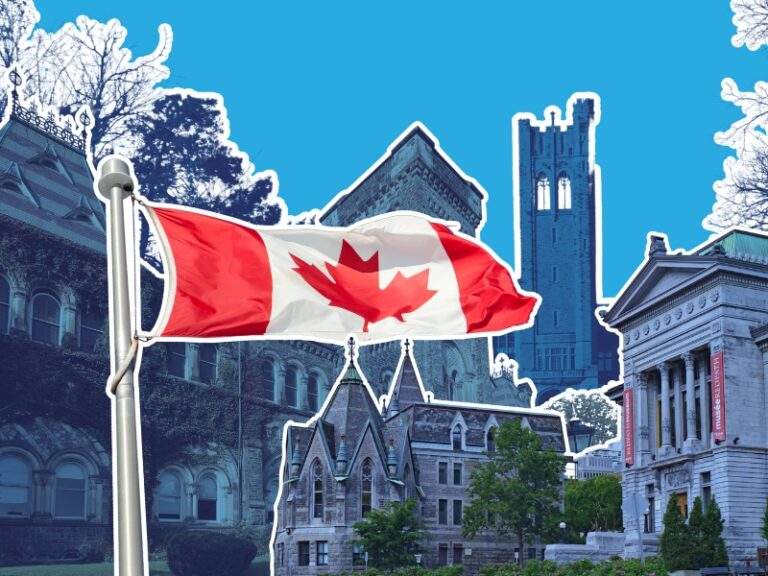Contact Us
[email protected]
Spain vs. Singapore vs. USA: Which MBA Offers the Best ROI Abroad?

As global MBA trends shift, Spain and Singapore are emerging as top destinations for international students seeking high ROI, career mobility, and diverse cultural experiences. While U.S. programs still lead in prestige, growing interest in Europe and Asia reflects changing priorities among MBA candidates navigating a globalized business education landscape.
Despite culture shock, language barriers and having to face difficulties due to the unknown, Spain and Singapore are emerging destinations preferred over the US by MBA students choosing to study abroad.
Despite culture shock, language barriers and having to face difficulties due to the unknown, Spain and Singapore are emerging destinations preferred over the US by MBA students choosing to study abroad.
Historically the US has always dominated global rankings of MBA courses – Twenty years ago, over 80% of the top 40 ranked MBA courses were based in the US. Now, this figure is below 50%, as MBAs in other regions are up there competing with US MBAs, and gradually gaining ground in what respects to students’ choices.
For international students, embarking on an MBA abroad is thrilling and challenging in equal measure. Beyond the academic rigors, adapting to a new cultural environment poses its own set of obstacles. From overcoming culture shock to building a support network, international candidates of an MBA abroad are choosing an experience out from their comfort zone.
MBAs in Spain
US business schools still are at the top 4 spots (Stanford, Penn, MIT, and Harvard) in the 2021 global MBA rankings but over 50% of the top 50 MBA business schools are located in Europe, and three business schools offering an MBA in Spain made the top 15 rankings.
The three high-ranking Spanish business schools were IE Business School in Madrid (9th). IESE Business School, Barcelona (11th), and ESADE Business School, Barcelona (12th). Other popular and well-respected Spanish business schools offering MBAs include University Carlos III of Madrid, EU Business School of Barcelona, EAE Business School of Barcelona, and ESIC Business & Marketing School.
Only three other European business schools rank higher than these three MBAs in Spain and they are: HEC, Paris, INSEAD, Paris, and London Business School.
In Spain, the Ministry of Universities reported that over 46,000 Spanish students ventured abroad through mobility programmes in the 2021/22 academic year, while 135,474 international students chose to enrol in Spanish universities during the same time. We spoke to the Vice- Rectorate for Internationalisation and Multilingualism at UV, who informed us that the university has welcomed 2,782 exchange students this academic year (2023/24). Additionally, there are 2,308 international students enrolled in undergraduate degree programmes and 2,300 international students completing postgraduate degrees.
Opportunities for employment
US business school generally rank higher than Spanish business schools in the area of Thought Leadership. Thought Leadership is about finding the deepest understandings and creating the most insightful and innovative courses.
Thought leaders generate motivation and promote improved learning through their dedication, expertise and strategy.
US business schools are well established and the prestige they have enjoyed during recent years has meant they have attracted top teachers and brought in the funds to facilitate continued development and expansion.
The gap between an MBA in Spain vs the US in terms of Employability and Entrepreneurship & Alumni Outcomes used to be considerably wider.
Now both enjoy similarly impressive rankings in these areas meaning that MBA graduates of US and Spanish business schools both have an excellent chance of securing employment because their qualification is well respected and the skills they have gained are perfectly suited to the current market.
ROI
In general, Spanish MBAs are seen to offer a better Return on Investment than US MBAs. Spanish MBA programs cost significantly less than US MBA programs. Spanish living costs are much lower than in the US, as are course fees.
Spanish MBAs also are almost always shorter than US MBAs meaning that students have less time to rack up debts and can start applying for work quicker.
Most Spanish MBAs are one year long whereas most US MBAs last two years.
It should also be noted that Spanish MBA classes tend to be smaller than US classes and Spanish MBAs have higher acceptances rates.
US prestige doesn’t come cheap though and for many students studying their MBA in Spain or another European country will be a much wiser decision.
The chances of getting accepted on your desired course will be higher in Spain and your Return on Investment could be significantly better.
Culture shock and language barriers
Spain is an attractive location for students considering the country for their studies. Things such as the gentle weather, the well renowned gastronomy, the considerable low cost of living compared to other countries in the north of Europe, the outdoors lifestyle and the openness and outgoing nature that characterizes Spanish people, are some of the elements that attract individuals from all over the world wanting to visit and live in the country.
Spain’s idiosyncrasy typical of a Mediterranean country where even the time seems to work differently that in its neighbours’ countries: long dinners and slow afternoon breaks, lively and late evenings, many outdoors festivals, are some of the appealing elements for a perfect vacation destination, but perhaps these are not so suitable for studying and work. The MBA student will find it challenging to find the right balance between his social life and his studies obligations.
Language proficiency, too, plays a significant role in overcoming culture shock. Improving Spanish skills and communication abilities in a new environment is essential to integrate in the local culture. At many Spanish institutions, international students can enroll in language courses, participate in language exchange programs and practice conversing with native speakers to boost their proficiency.
MBAs in Singapore
Singapore is home to several top universities where students can enhance their business skills and develop a robust professional network. One such institution is Singapore Management University (SMU), a prestigious business university that offers a range of programs allowing you to tap into top career opportunities.
Singapore hosts several world-class business schools that consistently rank among global leaders:
- INSEAD Business School – Ranked 2nd globally according to Financial Times
- National University of Singapore (NUS) – Ranked 25th globally
- Nanyang Technological University (NTU) – Ranked 38th globally
- Singapore Management University (SMU) – Ranked 61st globally
- Essec Business School – Ranked 70th globally
NUS Business School offers excellent employment prospects, with 87% of graduates finding jobs within three months of graduation and an impressive 170% increase on pre-MBA salary.
Assets and barriers
Singapore, often referred to as the “gateway to Asia,” is strategically located at the crossroads of East and West. The city-state’s geographical position makes it a hub for international trade, commerce, and cultural exchange.
Studying in Singapore provides students with a unique opportunity to immerse in a dynamic environment that seamlessly connects two major economic regions. A very multicultural environment were many languages (Chinese, Malay, Indian, expat communities) are spoken, but as English is the official language, there is no language barrier.
As a student, you’ll experience the vibrant blend of Eastern and Western cultures, gaining valuable insights into diverse business practices. This exposure prepares you to navigate the complexities of a globalized business landscape, where cross-cultural understanding is a key asset.
Singapore has earned a reputation for its commitment to innovation and technological advancement. The city is renowned as a business hub with a robust economy and a thriving ecosystem of multinational corporations, startups, and entrepreneurial ventures.
In fact, Singapore climbed 10 places to eighth in Startup Genome’s latest global startup ecosystem ranking, the first time it has entered the top 10.
Singapore is excellent for finance, consulting, and tech (regional HQ roles), but the market is relatively small; fewer opportunities in fields like venture capital, media, or niche industries compared to the U.S. Some MBAs however are placed well with multinational and American firms during the internship and post-graduation.
ROI
Tuition in Singapore is generally lower than at top U.S. schools. Living costs are high but still often lower than in major U.S. cities like New York or San Francisco.
Shorter programs (12–18 months vs. 2 years in the U.S.) reduce both tuition and opportunity cost.
Post-MBA salaries in Singapore are strong for Asia, but they’re often lower than top MBA salaries in the U.S. (especially in New York, Silicon Valley, etc.).
However, as the cost of living and taxation are lower, things get balanced somewhat.
High standard of living
Singapore consistently ranks high in global quality of life indices, making it an attractive destination for students seeking a comfortable and safe living environment.
The city boasts excellent healthcare, efficient public transportation, and a well-developed infrastructure. As a student in Singapore, you’ll enjoy a high standard of living that enhances your overall well-being and allows you to focus on your academic and professional goals.
The emphasis on cleanliness, safety, and sustainability in Singapore contributes to a conducive learning environment.
On the other hand, and in comparison, in the US, student rent, healthcare, insurance, and daily expenses are high in most major cities, and even small college towns can be costly. Some areas have higher crime rates compared to Singapore. Gun violence and social issues can be a concern. In most cities, you’ll need a car; public transport is limited outside of NYC, Boston, Chicago, etc.
Conclusion
Moving to a new country for an MBA often comes with challenges, including language barriers, cultural differences and homesickness. Adapting to these changes requires mental and emotional preparation. It’s essential for MBA students to anticipate potential culture shock and embrace it as part of their growth journey.
The challenges that international students who are studying MBA programs abroad face range from the general communicative barriers to the subtle cultural differences concerning the academic expectations, financial struggle, and having to adjust to different social norms that the ones they are used to.
That said, maintaining a sense of identity while embracing cultural diversity can be challenging for international MBA students. Engaging in cultural exchange activities, celebrating festivals from their home country, seeking support channels at the university and participating in multicultural events can help students feel a sense of belonging within their new community.
Ultimately, pursuing an MBA abroad as an international student can be a transformative experience filled with opportunities for growth and learning.








